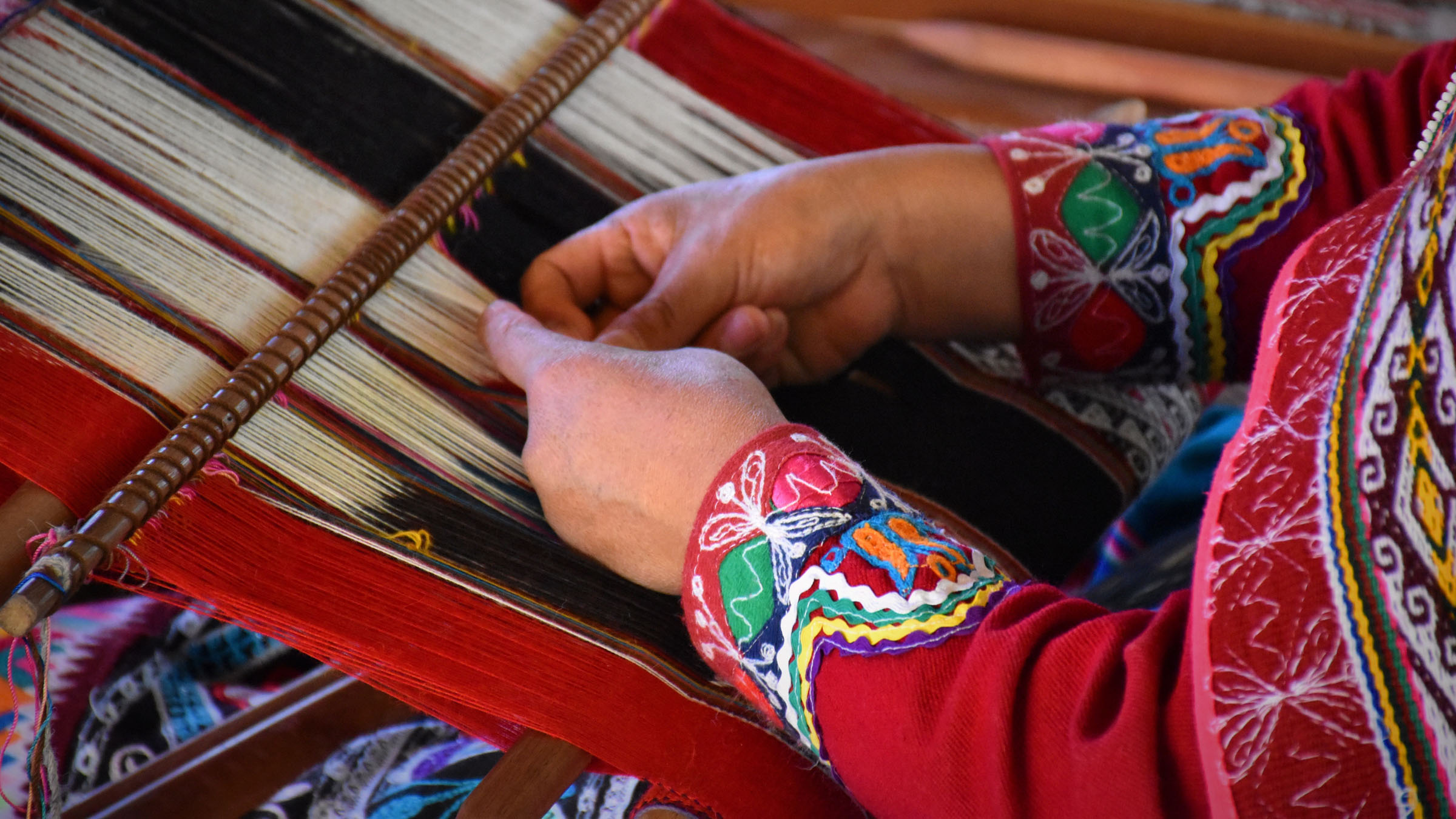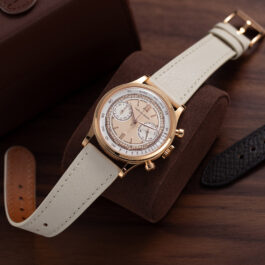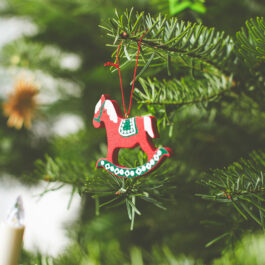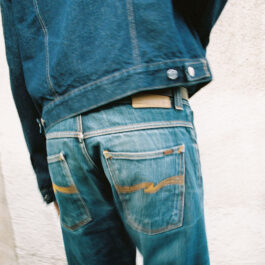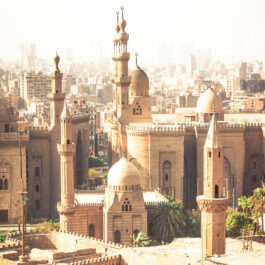You’ve probably heard that we should all be ordering our holiday gifts early this year. With supply chain disruptions and the ever-present threat of retail restrictions and closures, it’s better to be safe than sorry. You’ve also definitely been told to support small, local businesses, artisans and producers, showing them some much-needed support after a tough year. With our guide to handcrafted gifts, you can do both – shop early and online, from small businesses all over the world (and do some armchair travelling while you’re at it).
Textiles From Guatemala
Weaving is a craft that may date as far back as 27,000 years ago, and different traditions are cultivated around the world to this day. In Guatemala, the custom can be traced back to the ancient Mayan culture, with a through line from the techniques used by the women of the region 1,500 years ago to those weaving there today. The yarn (traditionally cotton) is coloured using natural plant dyes, then hand-spun and woven using a so-called backstrap loom.
Find gifts made from hand-dyed and hand-woven fabric made in Guatemala here and here.
Baskets From Bangladesh
Thanks to several recent interior design trends and the ubiquitous “nesting” spurred on by the pandemic, baskets in general are having a bit of a moment. A hand-woven basket from Bangladesh can become a reusable shopping bag, veggie-friendly produce storage, a magazine rack or a holdall for stray toys and other domestic messes. In Bangladesh, basket weaving is traditionally performed by women in the home, and fair trade organisations exporting their work help them earn a living while caring for families, even in remote areas. Materials used include wild sea grass, palm leaves or jute, all fast-growing natural fibres that require little to no fertilisation or watering, making them highly sustainable.
Find fair trade baskets from several countries here, and baskets and other crafts from Bangladesh here.
Romanian Embroidery
The Romanian blouse had its big moment in the fashion spotlight a few years ago, when celebrities and street style influencers were suddenly spotted sporting the traditional folklore garment and modern interpretations of the style. The typical peasant blouse is simple and airy in shape, made from natural fibres like cotton, flax or hemp, with often intricate and colourful stitching. Patterns are usually abstract or inspired by nature, perfectly complementing a contemporary boho look.
Find new, vintage and upcycled garments from Romania, Ukraine and the Republic of Moldova here, or traditional Romanian blouses here.
Kenyan Soapstone
Toys made from soapstone make excellent gifts for kids of almost all ages (once they’re old enough to know not to throw them across the room). From carved animals for the little ones to intricate chess sets or even decorative objects for adults, gifts made from the stone named for its soapy feel are smooth to the touch and pleasantly rounded. The first carvings were probably made from the soft stone in China over 3,000 years ago, but the craft spread to all continents and is still practiced in many cultures. On the African continent, soapstone sculptures were already produced by the ancient Egyptians and by the Yoruba culture around the Middle Ages. Today, most of the world’s soapstone is mined in Kenya, where many of the objects found on fair trade sites also come from.
Find toy animals and a chess set carved in Kenya here and contemporary decorative soapstone objects here.
Capiz Shell From The Philippines
If you’ve ever come across Capiz shell (sometimes spelled Capis), it was probably in its most common form – as part of a wind chime or inlay on decorative art that looks like stained glass. These molluscs, found mainly around the Philippines, were first used in place of glass, including as decorative stained glass for churches, which gave them the name “windowpane oyster”. The specific skills needed to transform the marine bivalve into a translucent, shimmering disk of milky white (often dyed for effect) have been handed down over the generations, so much of the Capiz art you find today will still hail from the eponymous Capiz province in the Philippines. Today, that includes contemporary jewellery, lamps and other interior accessories.
Vegetable Ivory From Ecuador
The tagua nut has long been used as a low-cost alternative to rare and pricey ivory, but only in recent years has it really gained traction as a cruelty-free, vegan and sustainable option. Native to South America, it was traditionally used to make jewellery in communities indigenous to the rainforests where the palm tree that produces these hard seeds grows.
Indigo From Japan
Blue is one of the rarest colours in nature, which is why blue dye was one of the prized substances in the world until synthetic colouring methods came along. Extraction and dyeing with the Indigofera tinctoria plant became big business in many countries and the process, as well as associated techniques, are recognised as UNESCO Intangible Cultural Heritage. Natural Indigo dye is still produced and used in very few places, including Japan.
Find contemporary indigo-dyed garments from Japan here, and traditional ones here.
Beaded Jewellery From Kenya And Tanzania
Pictures of the Maasai with their colourful beaded jewellery are often used as shorthand for “indigenous African tribes”. International couture houses have “paid tribute” to their “look” more than once in the recent past, but this is rightly derided as cultural appropriation when references are stolen without consulting or employing the artisans who live, breathe and truly understand the deep cultural meanings behind the colours and patterns of the craft. However, supporting these (mainly female) artisans by purchasing their products, hand-made for export, is a great way of showing appreciation while also stepping up your accessories game.
Find Maasai jewellery from Kenya here and from Tanzania here.
Felted Rugs From Kyrgyzstan
Felted wool was one of the earliest textiles made by humans, especially in cold regions where sheep, goats and other animals that give wool were already being raised. In Kyrgyzstan, it has long been a part of the lives of the nomadic people who insulated their yurts with functional felt wall and floor liners. However, there was also an artistic aspect to the craft that is now becoming increasingly appreciated abroad. Ala-kiyiz and Shyrdak, the two techniques behind types of Kyrgyz felt carpets, are even inscribed on the UNESCO list of Intangible Cultural Heritage.
Find felt rugs here or buy warm felt slippers handmade in Kyrgyzstan here.
Hand-Woven Rugs From Egypt And Morocco
Flat-woven carpets and rugs are made in many regions and cultures, often according to techniques and designs handed down through the generations. In Morocco, the typical rugs are still made in remote villages of the Atlas Mountains by Berber people. They first became popular in western countries as part of mid-century modern interiors around the time the country first experienced a surge of tourists who were enchanted with the colourful local crafts. In Egypt, industrial production has largely taken over, but weaving schools and small manufacturers are keeping the skill of hand-weaving alive.
Buy Moroccan carpets directly from the makers here or purchase a hand-made rug from a social enterprise in Egypt here.
Porcelain From China
Porcelain was famously invented in China, and yet most of the heritage houses known for fine china internationally today are not Chinese. Nonetheless, Jingdezhen in Jiangxi province, known as the country’s “Porcelain Capital”, has an ongoing porcelain tradition reaching back at least 1,000 years. US-based brand Middle Kingdom are building on that heritage by creating “new works of imperial calibre” in that location, putting the skills of local artisans to good use creating fun, modern, often tongue-in-cheek pieces that start at affordable price points.
Swazi Glass
The Kingdom of Eswatini, also known by its former name Swaziland, is a small landlocked country sharing borders with South Africa and Mozambique. Its living culture is visible at every turn, with many families residing in traditional thatched huts, and wearing colourful folklore garments or jewellery. Traditional crafts are often promoted and exported through local cooperatives. However, one of the most successful businesses, Ngwenya Glass, was founded by a Swedish aid organisation in the 1970s and is now run by a South African couple. It produces unique tableware and decorative figurines from recycled glass, investing a portion of the profits in wildlife conservation and education funds. Shop the collection here.
Palestinian Pottery
If you are partial to serving starters meze-style, then what better way to present your tasty treats than from dishes handmade in Palestine? Middle Eastern small plates – from falafel to olives, hummus to baba ganoush, and tabbouleh to fattoush – will look their best in sets of matching bowls or plates hailing from the regions that originated the recipes. Pottery has a long tradition in Palestine and remains an important industry in a part of the world where work is scarce. If the ceramic versions are too folksy for your liking, try olive wood bowls instead; the craft of hand-carving them has also been practiced in the region for millennia.
Find a huge variety of ceramics from Palestine here or both ceramics and carved olive wood here.
Hand-Hammered Metal From Haiti And Mexico
Various metalworking techniques can be traced back to pre-Columbian civilisations across the Americas. In Mexico, hand-hammered copper is used for everything from serving bowls to kitchen sinks, but you will also find decorative art made from other metals. Haitian steel drum art is a relatively recent invention that combines this rich tradition and centuries-old techniques with modern upcycling. Delight the teenage Goth in your life with Day of the Dead-themed decorations from Mexico or Haiti, or go for something more contemporary with a hand-hammered planter made from Haitian steel oil drums.
Holiday Handicrafts From Germany And Austria
Always wanted to visit a Bavarian or Austrian Christmas market? Well that won’t be happening this year, since the latest lockdowns have forced them all to shut. Support the stall holders, most of whom had already set up for the season when the bad news came, by shopping the official websites of some of the most famous markets. Find typical foods, handmade toys, unique Christmas decorations and more from the Nuremberg Christkindlesmarkt (the largest and probably the most famous in Germany), as well as from Munich, Salzburg and Vienna online instead (all websites currently only available in German).

